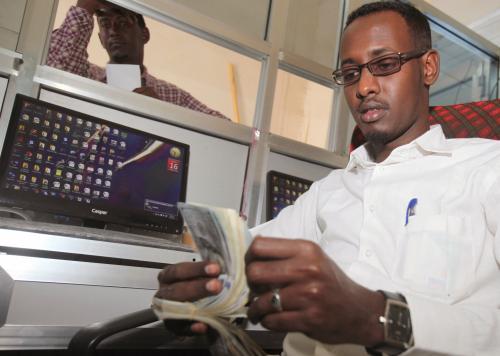Imagine a very low-income country, where women predominantly give birth in their homes and sick people are cared for and die at home. If you wanted to step in and make a measurable change to reduce mortality in two years, would you (a) draft regulations, provide trainings, and organize study tours for the ministry of health, or (b) get people to wash their hands twice as frequently?
I posed this question last week to a team of development partners in Vienna, Austria. The message seemed to sink in immediately. However, it’s rarely so clear-cut in practice, and that’s a missed opportunity.
In most cases, a representative of the government, an agency, or ministry approaches a development organization for support, not the child with bacteria in his fingernails. Development teams are composed of lawyers, former regulators, former industry professionals, not consumer researchers, behavioral designers, or psychologists. So it’s clear to see why the client and development assistance provider identify with one another so easily.
Let’s use this example to discuss finance. It seems natural that the financial sector of development involves central bankers, ministry of finance officials, and financial service providers. But let’s consider Tajikistan, where 2 percent of adults have an account at a formal financial institution, and most borrowing happens within families. The question of “last mile” and “inclusive” finance here has been misapplied to micro-credit, in my view, with the consequence that expensive, often dollar-denominated credit has exacerbated the vulnerability of the poorest, many of whom now borrow to eat. The question of inclusive savings is hard to say with a straight face, where banks are going bust and the regulator is hardly independent. One of my colleagues working in the area joked that “domestic deposits are savings for the naïve.”
How to be helpful in such a country? Think back to hand washing. What does it mean to have healthy habits with money, and how do we get there? Setting aside the typical counterparts and the worn-out concepts about financial “literacy” (e.g., textbook knowledge, understanding risk/return, calculating compound interest rates), we set out to define terms for healthy financial habits understood by the low-income mother in Konibodom with savings in a jar under the floorboards as well as by the salaried banker in Dushanbe, the capital of Tajikistan. “I feel in control of my financial situation.” “I have a financial goal.” “I have discussed my financial goal with my family.” “If I needed $50 tomorrow, I am confident I could get it.” Using simple visuals like happy and unhappy faces, we asked respondents to tell us how they felt about these statements, scaled their responses from 1-10, and indexed a number of measures into a composite “wellness” score. These statements aren’t original; they’re adapted from similar measures by United Kingdom’s financial market conduct watchdog and the United States Federal Reserve.
We then applied two approaches to try to change the way people in Tajikistan would respond to those statements. The first was educational entertainment. The “Sugd Mama” radio call-in shows air in Sugd province during morning rush-hour, catering to an audience of young mothers (the primary domestic spenders) with no-nonsense advice about money, smart food planning, extending the life of shoes and clothing, keeping apartments warm for less, trouble-shooting kids’ illnesses, and planning family events on a budget. The show has reached more than a million listeners and has an active Facebook following. It’s part of a system of entertaining content with behavior nudges, with similar television and radio programs seen in Kenya, Cambodia, Nigeria, Ghana, and elsewhere.
The second approach takes lessons from earlier experimental evidence showing the significant advantages of individualized financial counseling and goal setting and behavioral economic research applied to financial decisionmaking. We set out to change financial consumer attitudes and behaviors through individualized counseling. Since piloting the approach in four regions in Kyrgyzstan and Tajikistan in 2016 with a six-month assessment, we have shown the positive impacts of a 30-minute individualized consultation, even by amateurs. Counseling prompts consumers to set financial goals, discuss money among family, set budgets, realize savings, improve nutrition, and reduce overall loan exposure. Work in Central Asia also suggested that development partners could leverage the goodwill and research interests of business and finance university students to mobilize a team of experimental counsellors, bringing together the dual-objectives of helping consumers and conducting market research in one, a more sustainable project.
We’re excited to see how a behavior-driven approach can be applied further, and glad the development community begins to see behavioral design as a professional skillset. With some initial progress in U.K. and U.S. policy circles, these approaches still have a long way to go. Hopefully, sharing results that combine development impacts and numbers with behavior approaches will help to advance this work.
The Brookings Institution is committed to quality, independence, and impact.
We are supported by a diverse array of funders. In line with our values and policies, each Brookings publication represents the sole views of its author(s).








Commentary
Can nudge do more than regulation? The case for a behavioral approach to financial capability
May 18, 2017